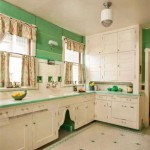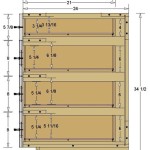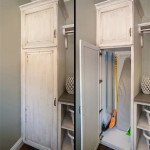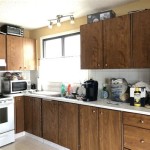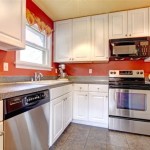How to Paint Antique Kitchen Cabinets: A Step-by-Step Guide
Are you looking to transform the look of your kitchen without breaking the bank? Painting your antique cabinets is a cost-effective and rewarding way to refresh their appearance and give your kitchen a whole new feel. Here is a comprehensive guide on how to paint antique kitchen cabinets, ensuring a professional-looking finish:
1. Preparation is Key
Before starting the painting process, thoroughly clean the cabinets to remove any grease or dirt. Use a mild detergent and warm water, then allow them to dry completely. Next, remove all the hardware, such as knobs and handles, to avoid paint spills.
2. Sanding and Priming
Sanding the cabinets is essential to create a smooth surface for the paint to adhere to. Use a fine-grit sandpaper (120-150 grit) and sand with the grain. Wipe away any dust with a tack cloth. Apply a coat of primer to ensure the paint will bond properly. Choose a primer specifically designed for antique furniture, as it will help protect the original finish.
3. Paint and Finish
Select a high-quality paint that is suitable for antique cabinets. Consider using a chalk-based paint for a distressed finish or a latex paint for a more durable finish. Apply multiple thin coats of paint, allowing each coat to dry completely before applying the next. Lightly sand between coats to create a smooth, even finish.
4. Protecting the Finish
To protect your newly painted cabinets, apply a clear sealant. This will help prevent scratches and stains. For a matte finish, use a matte polyurethane. For a glossy finish, use a semi-gloss or high-gloss polyurethane.
5. Reassemble and Enjoy
Once the sealant has dried, reattach the hardware. Stand back and admire your transformed kitchen cabinets. Your antique cabinets will have a fresh, new look that complements the rest of your kitchen décor.
Additional Tips
- Test the paint color on an inconspicuous area first to ensure you are satisfied with the result.
- Use a brush for intricate areas and a roller for larger surfaces.
- Allow ample drying time between each step to prevent peeling or smudging.
- Consider using a color enhancer to bring out the natural beauty of the wood grain.
- If you are not confident in your painting skills, consult with a professional for assistance.

How To Paint Antique White Kitchen Cabinets Rustic

Kitchen Cabinet Reveal Painted Oak

Kitchen Transformation In Antique White Milk Paint Cabinets Diy Makeover

Antique White Kitchen Cabinets General Finishes Design Center

Painting Kitchen Cabinets Antique White Pictures Ideas

Painted Kitchen Cabinet Details Antique White Cabinets Renovation

Antiqued Kitchen Crown Molding

The Best Antique White Paint For Kitchen Cabinets And Other Colors Too Jennifer Rizzo

Antique Painted Cabinets Tips And Techniques To Try At Home Family Handyman

How To Glaze Kitchen Cabinets Diyer S Guide Bob Vila



